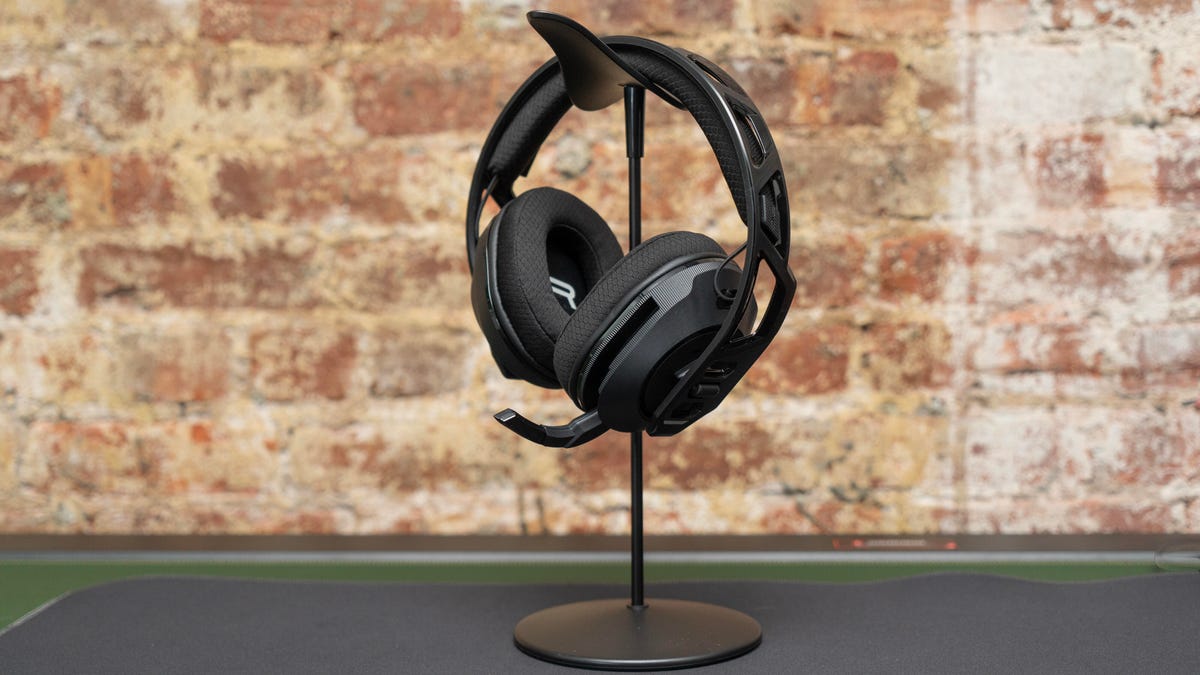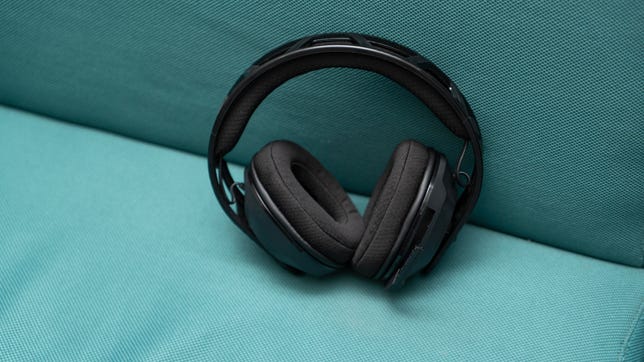 Why You Can Trust CNET
Why You Can Trust CNET Rig 600 Pro Series Gaming Headset Review: A Solid Value
It's not best in class, but this $100 headset delivers a lot for the money.

Nacon's Rig series of gaming headsets frequently surprise me. Sometimes the surprise is for the good and sometimes not, but the Rig 600 Pro series definitely falls into the former category. At the same roughly $100 price as other wireless models, including the Turtle Beach Stealth 600 Gen 2, SteelSeries Arctis 1 wireless and HyperX Cloud Stinger 2 wireless, the Rig 600 Pro offers similar performance and comfort for the same money but throws in support for simultaneous Bluetooth operation, which requires a price step up for other major competitors, except for the Corsair HS55 Core Wireless.
The headset comes in two versions, one for Xbox (the HX) and one for PlayStation (the HS), though they both work with the Nintendo Switch, PC, and any platform with Bluetooth audio, and are priced the same.

Nacon Rig 600 Pro HS
Like
- Dual Bluetooth-2.4GHz wireless support
- Voice prompts
- Very light
- Good sound quality in conjunction with Dolby Atmos
Don't like
- Settings control available only via phone app
- Only three size settings for headband
- No 3.5mm connection
- mic just okay
It's light at only 240 grams, but the tradeoff is it feels like it's primarily plastic. It doesn't seem flimsy, and the snap-in earcup design means the headband's less likely to break if stress is put on the cup. But I'm not a huge fan of the three-position design, since it's hard to get an exact fit. On me, at least, the middle position feels a bit too short and the bottom position is definitely too long.
Still, even if the fit isn't quite right, the headband and earcups still have enough padding and give to make it comfortable.
Rig's signature design is the three position, snap-in earcup design, but the flip-out/flip-in-flush mic is new.
Nacon's updated design for its flip-up mic follows the trend of other Bluetooth-capable headsets, easily folding into the left earcup. But other headsets do it to be less obtrusive when walking around and talking on your phone -- they generally have a built-in mic that allows you to talk without flipping out the boom. This headset doesn't.
Still I generally prefer flip-to-mute over removable mics, and I have a mic graveyard here to prove it. A garage to store the 2.4GHz wireless dongle would be even more welcome. If you're used to longer mics that you can bring closer to your mouth, it may take some time to accustom to the stiff, fixed position Rig mic. Without mic monitoring turned on, it's easy to doubt it's picking up your voice.
The mic flips up into the left earcup flush with the front.
There are no controls on the right earcup. The left houses power, volume, multifunction (for contextual control of media playback and calls) and mode (for cycling between Bluetooth, dual connections and USB wireless, which it calls Game mode). There's also the USB-C connector for charging. The buttons are a little too hard to quickly distinguish by feel to press, though their locations are memorable for differentiating among them -- the mode button is close to the top of the earcup.
Regardless of which platform you're connected to, you control the settings via an app, which lets you control mic gain to +/-3 or +/-6 decibels. You can also choose from eight steps of mic monitoring levels, create up to three custom output equalizer presets with the 10-step EQ (in addition to the predefined curves), define which mode the headset starts up in and make a few more minor features. One nice touch is the Test mode, where you can verify each of the buttons and the mic are working.
I don't love app-only control. I charge my phone on the other side of my room and I primarily use a desktop system, so it just irks me. It also means you have to be in dual-connection mode to change the settings, which can be annoying if you don't want to use the Bluetooth for whatever reason.
The mic is nothing spectacular, but not awful -- unless you've got noise in the background. I think it uses some sort of aggressive noise cancellation that suppresses background noise but makes voice sound a little hissy and compressed. You can't disable it either. If there's no noise, voice sounds better.
The buttons are somewhat small and hard to quickly find without looking.
With the flat EQ profile, audio sounds a bit... flat. It's also heavy on the higher frequencies. Unsurprising, since this is a fairly basic set of headphones and it's optimized for in-game sounds and chat, which tend to be mid-to-highs. The bass boost preset goes to the other extreme, but by bringing it down a bit I was able to tune it to my preferred sound, and there are presets for FPS games and chat clarity which emphasize the highs even more.
The HX model ships with a code for a limited-time activation of Dolby Atmos. It sounds a lot better using Atmos: It's more balanced and detailed regardless of which of the presets you choose. Surround is solid; I had a little trouble distinguishing the right and left front channels from the sides, and even more with the elevations. But it's noticeable enough that it's worth using Atmos with these.
Battery life is rated at about 18 hours with 2.4GHz and 24 hours with Bluetooth which sounds about right given my experience. That's not terrific, but it's OK if you only use them intermittently or if you make a point of charging them every day. You can play while they're charging, but you still need the wireless connection.
While the Corsair HS55 wireless would come close if its mics were less prone to failure -- both I and a colleague have experienced it ourselves -- so the Rig 600 Pro standard out for its solid performance and above-average features for the money.

